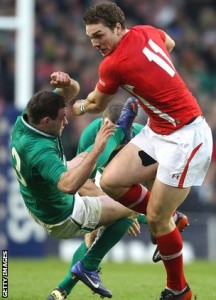The Wales “scary” back line (according to Jamie Roberts himself) with George North, Alex Cuthbert, Jamie Roberts and Mike Phillips all well over six foot and three of those players being over 16st, has received a lot of press attention in this year’s 6 Nations. Rugby has always boasted about how it is truly a sport for anyone – big or small, plump or petite, everyone can play – but has that changed for the sport at the highest levels? And how has this affected junior and amateur rugby?
I remember when I first picked up the oval shaped ball I started off as a hooker only to settle on the scrum half position a few weeks later. It’s almost impossible to picture such a change in the modern era at the professional level (the English women´s former #9, Amy Turner, excepted). But how has the emphasis on size and big hitters from the professional level effecting those playing at a junior and amateur club level?
I have spoken to a few people this week, mostly in the their mid twenties, who have become enthusiastic rugby fans since 2003, albeit at armchair level. When I asked them for their reason for not actually picking up the ball, a lot of them have said that they are “not big enough”. Further to this, some have moved from the contact game into ‘touch rugby’ because of the difficulty in competing with more physical players who have developed their physique for a particular position over the course of many years.
One might suggest that size is more of an issue only in the professional game, owing to the time contracted rugby players can spend in the gym. However, as most of us who have played amateur rugby have experienced, even at youth level there is a clear advantage to the youngsters who develop quicker.
As a result, the IRB are constantly concerned about the image professional rugby portrays to newcomers and a lot of effort is made to ensure that parents don’t get put off by the prospect that their son or daughter will suffer a nasty injury from bigger players. This leads to the IRB regularly monitoring and tightening the rules, exemplified by the response to the famous Brian O’Driscoll spear tackle in New Zealand on the 2005 Lions tour, which was a well reasoned step towards ensuring that the game remained safe for all players.
When England played host to Wales at Twickenham in this year’s 6 Nations Championship, the combined weight of the backs alone came to 1.2 Tonnes. This is equivalent to a hippopotamus strolling around on England’s hallowed turf!
Did Jonah Lomu instigate all this? The infamous moment in 1995 when he trampled poor Mike Catt to the try line propelled him to celebrity status (and subsequently stared in a Pizza Hut advert which is well worth watching again here) as he became the first man monster that players and teams feared across the world.
It is almost mandatory to be of a certain size in the professional era. Even the likes of Shane Williams started off a lot smaller before making his first international cap. However, it cannot be ignored that at club level there is a still a lot to made from skill, agility and speed, and it is often that we see smaller players being successful.
That being said, all this could be pointing to one thing, that conditioning and fitness are becoming increasingly important in the modern game – at both a professional and an amateur level. Further to this, FindRugbyNow is determined to give you access to the best fitness and conditioning advice with the Fitness and Ask a Pro. These are tailored to your needs as an amateur rugby player, and we hope that you use them to get the tools you need to continue to play rugby. After all, if you can, we think it is better to play AND to be an armchair fan.
We are really interested to hear your thoughts on this article and how size, strength and fitness has affected your club. Please drop a comment below, or get in touch via the forums.
Andrew Bladon








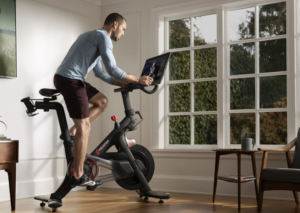 When most people hear the word “Peloton” they think of an expensive black bike with shiny red buttons and that controversial commercial where the husband gifted his wife a Peloton for Christmas.
When most people hear the word “Peloton” they think of an expensive black bike with shiny red buttons and that controversial commercial where the husband gifted his wife a Peloton for Christmas.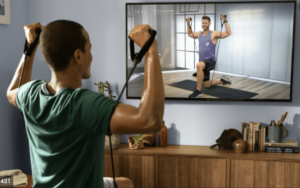 If the app interests you, Peloton is currently offering a 30 day FREE TRIAL, so why not give it a try? Check it out
If the app interests you, Peloton is currently offering a 30 day FREE TRIAL, so why not give it a try? Check it out 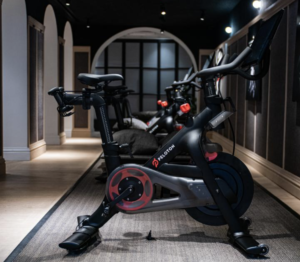
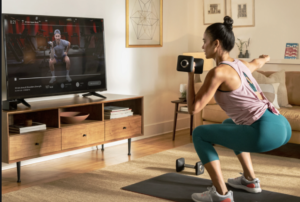
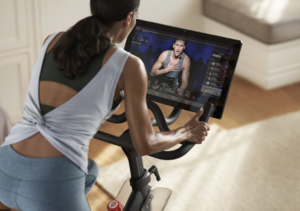 This article would not be complete, however, if we did not acknowledge some of the delivery issues that have been plaguing Peloton over the last year. Most of the delivery issues seem to affect U.S. deliveries, however, the UK deliveries have been affected as well.
This article would not be complete, however, if we did not acknowledge some of the delivery issues that have been plaguing Peloton over the last year. Most of the delivery issues seem to affect U.S. deliveries, however, the UK deliveries have been affected as well.





